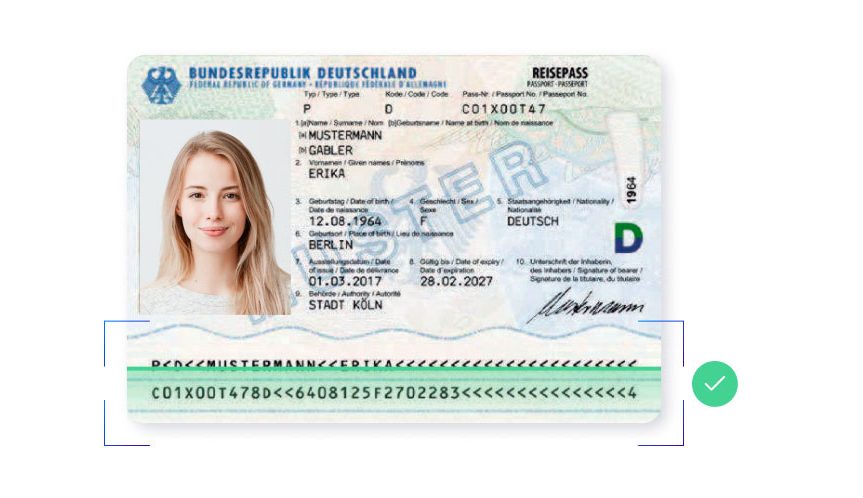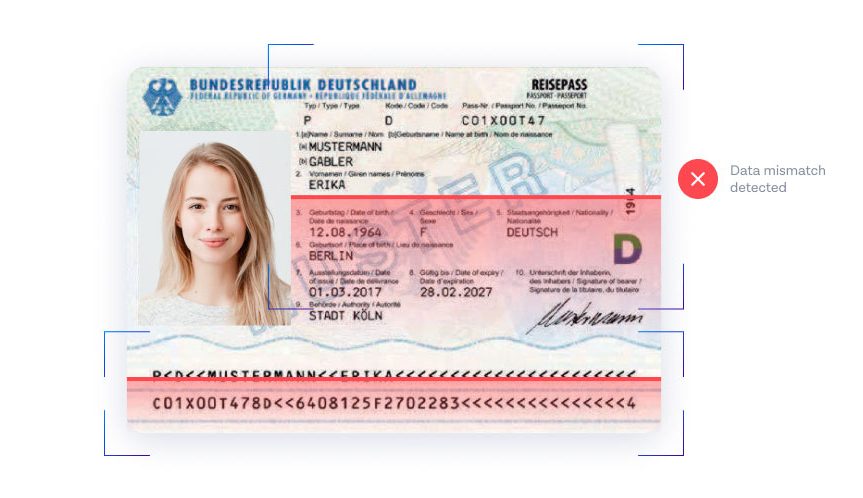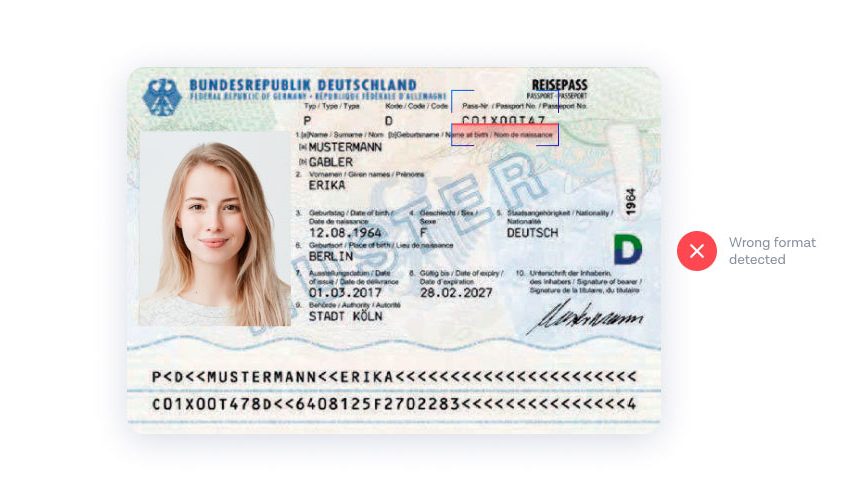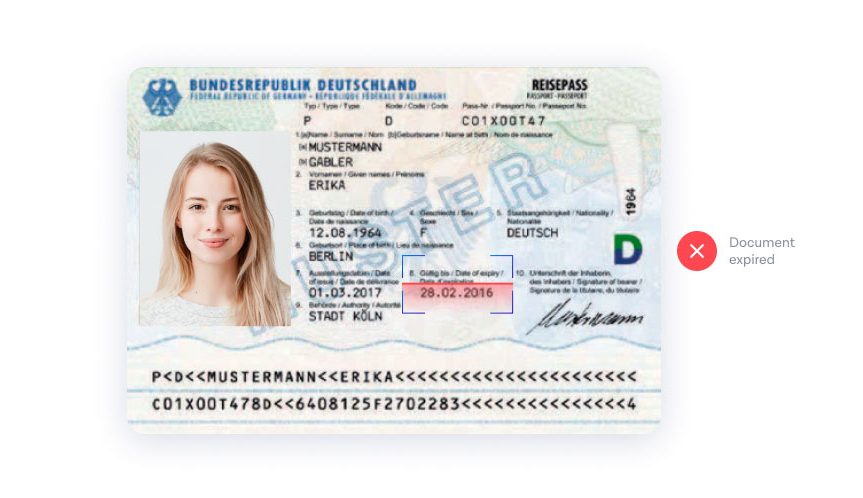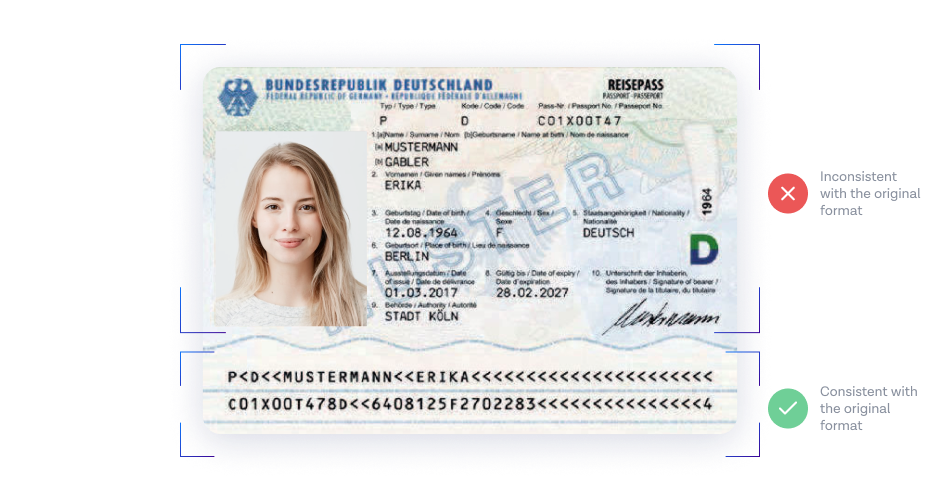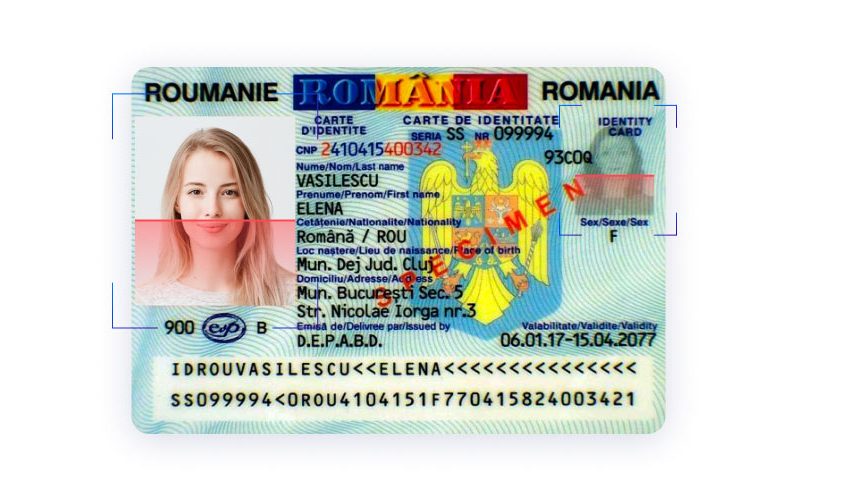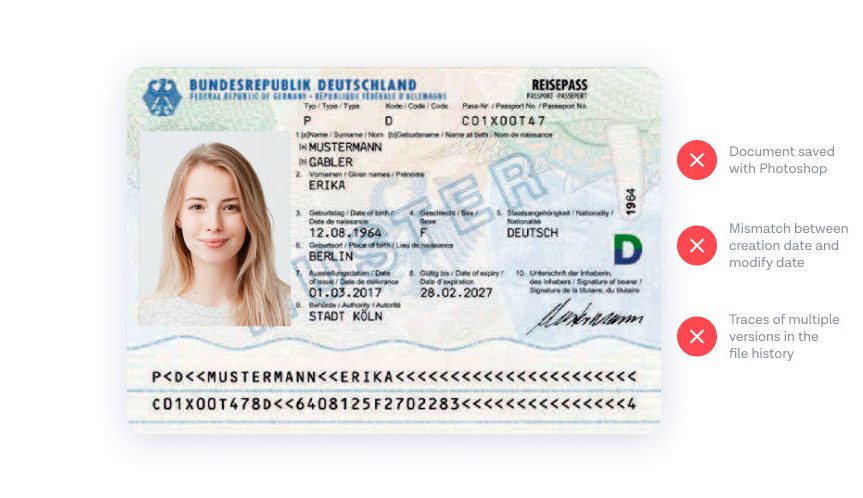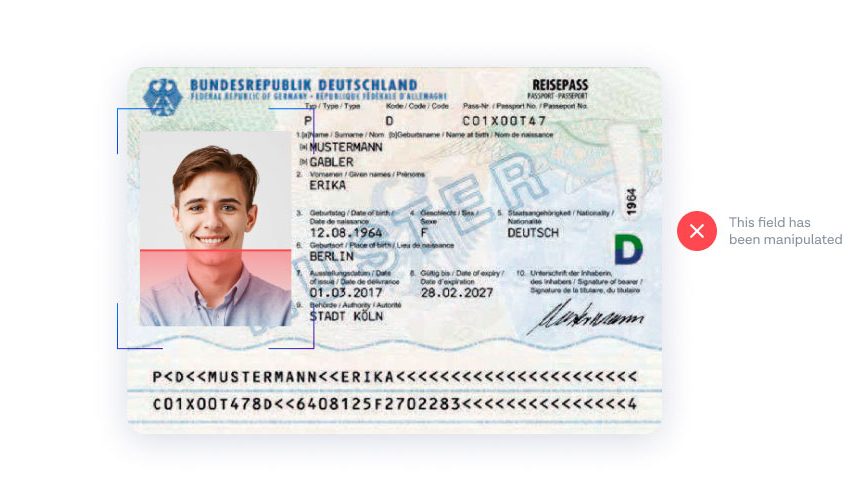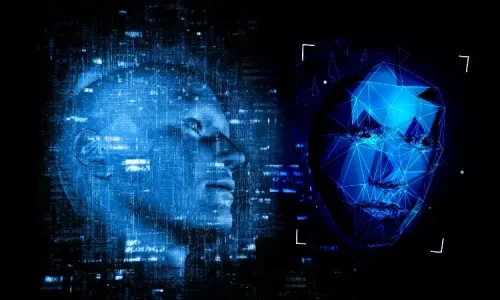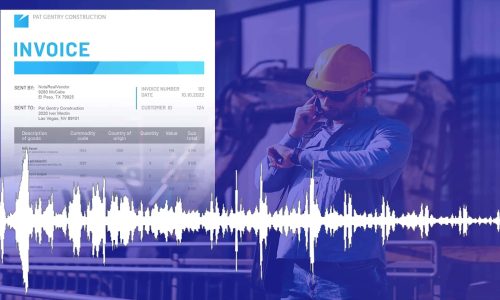AI Document Verification
- 100% automated
- Check document with our API
- Scan document with mobile SDK
- AI-Powered anti-forgery
What can we do?
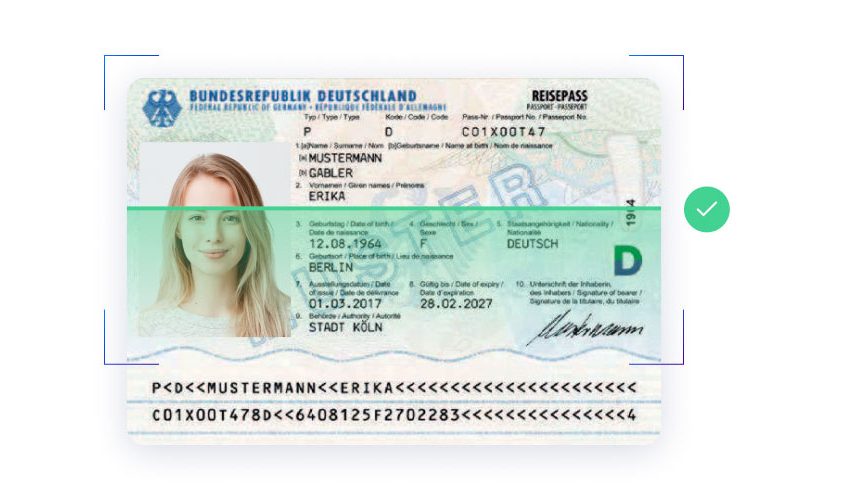
Data Extraction
Extract relevant information from the visual part of the document through our OCR algorithms
- Name
- Surname
- Date of Birth
- Country
- Document number
- Optional data
- Personal number
- Sex
- Document class code
- Issuing state code
- Nationality code
- Place of issue
- Place of birth
- Date of issue
- Age of issue
- Years since issue
-
 100% Automated
100% Automated -
 5 seconds response
5 seconds response -
 99.2% accuracy rate
99.2% accuracy rate

